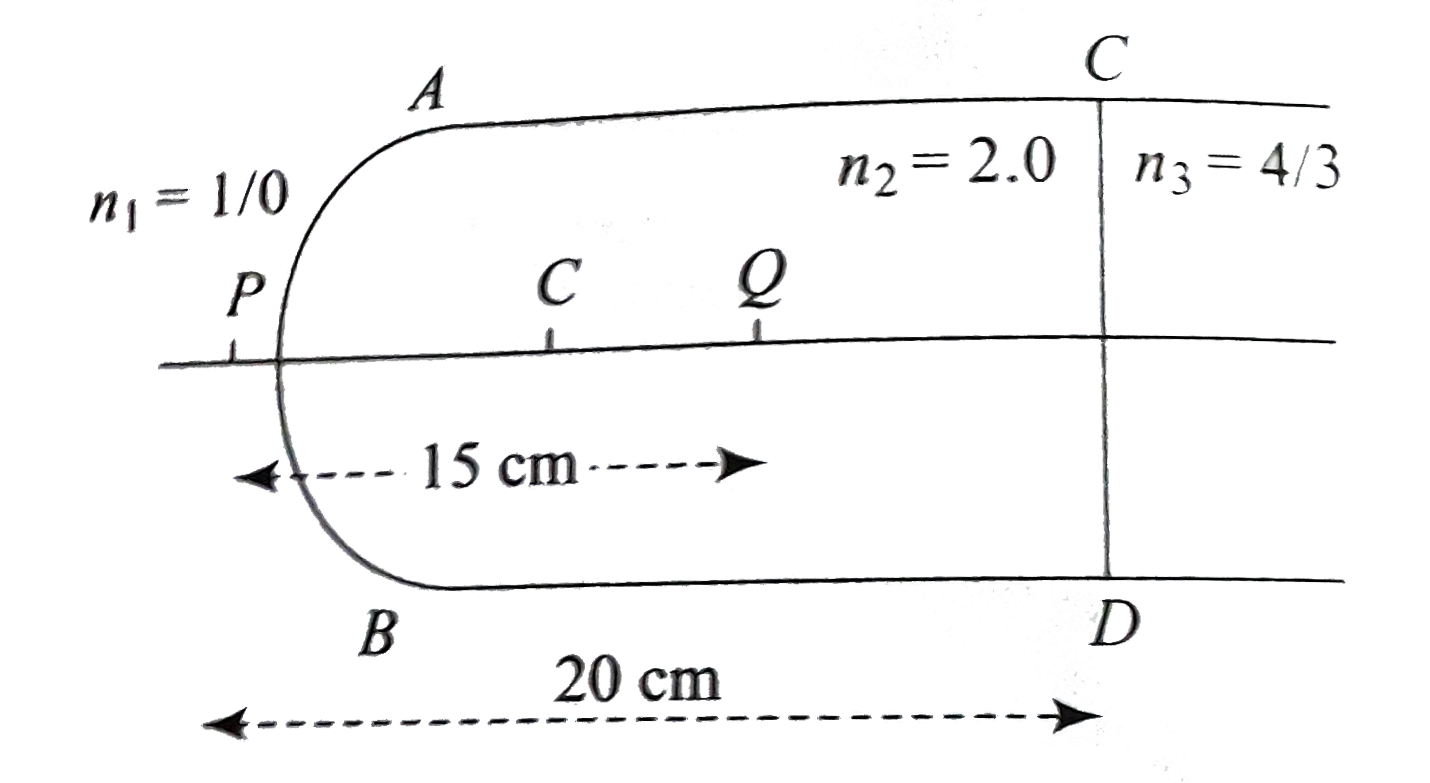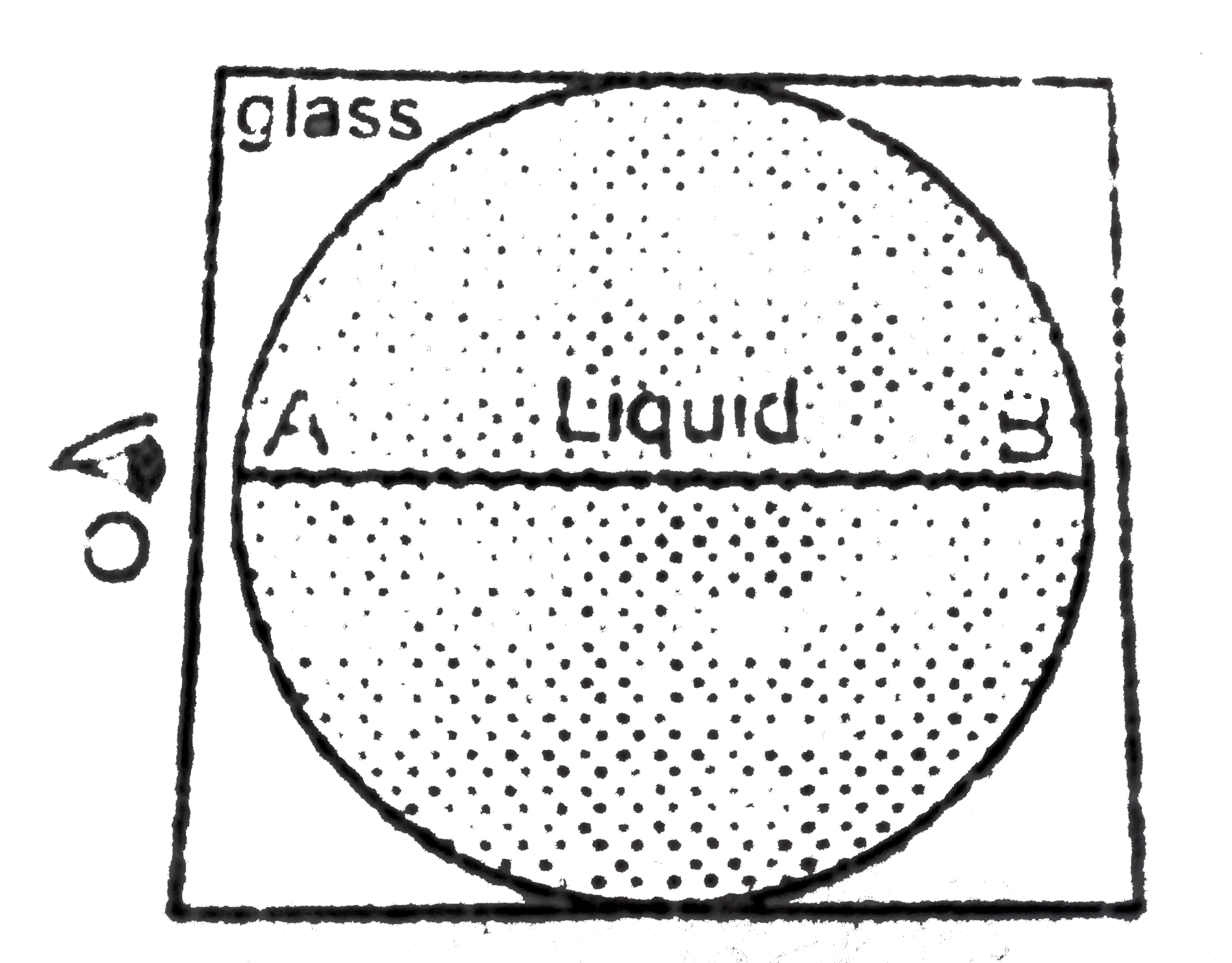Complete Solutions to DPP 1.3 of chapter RAY OPTICS of Class 12 book with complete answers and questions
| Class 12 | PHYSICS |
| Chapter | RAY OPTICS |
| CENGAGE PHYSICS DPP | DPP 1.3 |
| Number Of Questions | 14 |
| Academic Year | 2023-24 |
A parallel paraxial beam of light is incident on the arrangement as shown `(mu_(A)=3//2, mu_(B)=4//3)`. The two spherical surfaces are very close and each has a radius of curvature 10 cm. Find the point where the rays are focussed. (w.r.t. point of entry)
 06:08View Solution
06:08View SolutionA ray of light falls on the surface of a spherical glass paper weight making an angle `alpha` with the normal and is refracted in the medium at an angle `beta`. The angle of deviation of the emergent ray from the direction of the incident ray is :
03:49View SolutionA poinit object `O` is placed in front of a glass rod having spherical end of radius of curvature `30cm`. The image would be formed at
 03:26View Solution
03:26View SolutionA glass hemisphere of radius 0.04 m and refractive index of the material 1.6 is placed centrally over cross mark on a paper (i) with the flat face, (ii) with the curved face in contact with the paper. In each case, the cross mark is viewed directly from above. The position of the images will be
06:46View SolutionAn air bubble in sphere having 4 cm diameter appears 1 cm from surface nearest to eye when looked along diameter If `._(a)mu_(8)=1.5`, the distance of bubble from refracting surface is
02:09View SolutionA slab of a material of refractive index 2 shown in the figure, has a curved surface APB of radius of curvature 10cm and a plane surface CD. On the left oa APB is air and on the right of CD is water with refractive indices as given in the figure. An object O is placed at a distance of 15cm from the pole P as shown. The distance of the final image of O from P, as viewed from the left is `"__________________"`cm.
 03:41View Solution
03:41View SolutionA parallel beam of light emerges from the opposite surface of the sphere when a point source of light lies at the surface of the sphere. The refractive index of the sphere is
01:59View SolutionIn a thin spherical fish bowl of radius 10 cm filled with water of refractive index `4//3` there is a small fish at a distance of 4 cm from the centre C as shown in the figure. Where will the image of fish appears, if seen from E.
 03:22View Solution
03:22View SolutionThe observer 'O' sees the distance `AB` as infinitely large. If refractive index of liquid is `mu_(1)` and that of glass is `mu_(2)`, then `(mu_(1))/(mu_(2))` is :
 .02:46View Solution
.02:46View SolutionThe first factor length `f_(1)` for refraction at a spherical surface is defined as the value of u corresponding to `v=oo` (as shown) with refractive indices of two mediums, as `n_(1)` and `n_(2)`. The second focal length `f_(2)` is defined as value of v for `u=oo`.
 02:48View Solution
02:48View SolutionRatio of amplitude for two wave is 1:2 .Find the ratio of max:min Intensity?
01:46View SolutionRatio of amplitude for two wave is 1:4 .Find the ratio of maximum amplitude to minimum amplitude.
01:24View SolutionRatio of amplitude for two wave is 1:4 .Find the ratio of maximum intensity to minimum intensity.
01:53View SolutionWhat is the specific heat ratio of monoatomic gases ?
01:01View Solution
DPP 1.3 questions and complete solutions for chapter RAY OPTICS of CENGAGE PHYSICS (ENGLISH) of Class 12
